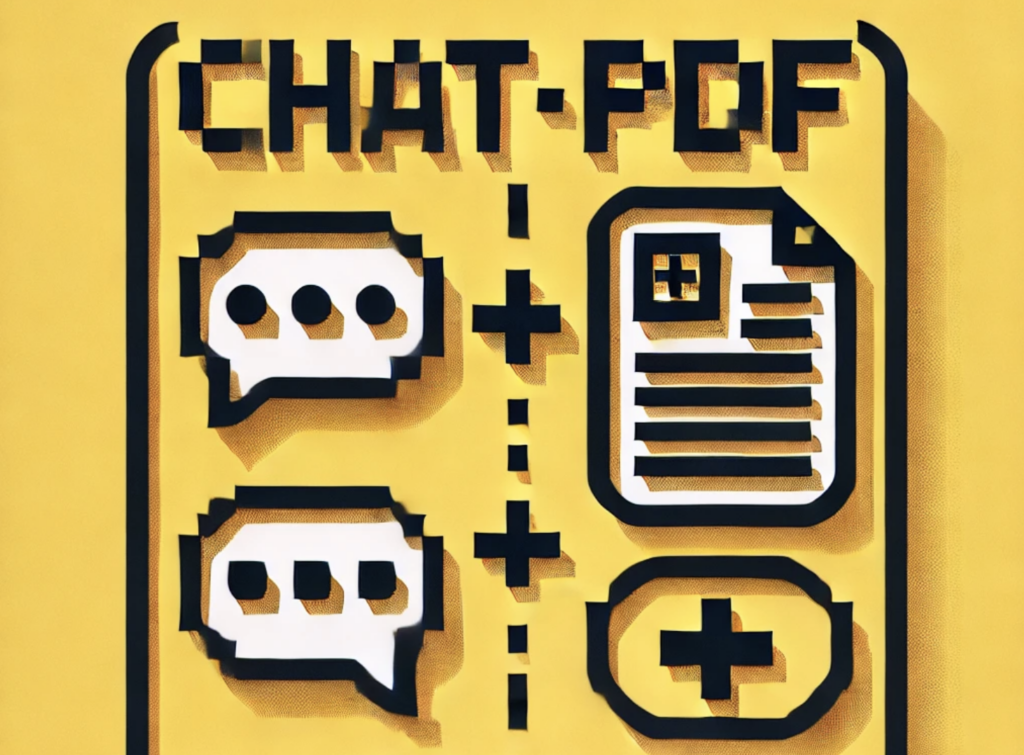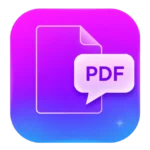
If you’re diving into academic writing or research, ChatPDFGPT could become your new best friend. It’s like having a super-smart assistant who can help you quickly sift through dense academic papers, pull out the key points, and even answer your questions about the content. Whether you’re trying to understand a complex theory or need a quick summary of a study, https://www.chatpdfgpt.ai/ makes the whole process a lot easier and less time-consuming.
Introduction
For scholars and researchers, academic writing is a must. However, it is certainly not that easy. When you have already learned a lot about a topic and want to explain complex and challenging ideas, in plain characters, it can already be quite challenging. Of course, it will be even more challenging when you’re looking at dense and difficult to understand texts. This is where ChatPDFGPT can come in: it can change how you write and teach in academia, by making it easier to interact with texts. In this article, I will try to understand how ChatPDFGPT can be a real game-changer for academic writing and teaching.
Overview of ChatPDFGPT
https://www.chatpdfgpt.ai/ is an AI-powered chat assistant that allows you to interact with any PDF document. It helps you extract, summarize, and understand information by answering your questions in real-time.Your PDF AI – like ChatGPT but for PDFs. Summarize and answer questions for free.
Key Features
- Seamless Collaboration: Enables real-time collaboration by allowing multiple users to chat and interact with the same PDF file simultaneously.
- Shared Records and Notes: Facilitates the sharing of notes and annotations among team members, improving collective analysis and understanding of the document content.
- Effortless Content Analysis: Provides a streamlined way for teams to discuss and analyze PDF content together, integrating chat capabilities directly within the document environment.
Pros And Cons
| Pros | Cons |
|---|---|
| Easy interaction and extraction from PDFs | Limited functionality for very large PDFs |
| Supports multiple languages | Free version may have feature limitations |
| Accessible on web, desktop, and mobile platforms |
Use Cases

Academic Applications
1. Engaging with Texts
ChatPDFGPT lets students interact with documents in a way that’s more hands-on. They can ask questions, get clarifications, and even challenge the ideas in the text. This kind of back-and-forth helps them really grasp the material and form their own opinions, which is super helpful when it comes to writing academic papers.
2. Conducting Research
It makes researching easier. If, as a student, you were writing about ‘X author’, you could talk directly to that author through ChatPDFGPT, using their texts instead of Googling quotes and information: it saves you time, it gets you right into the thing, and it improves your idea of the thing.
3. Developing Critical Thinking Skills
Through their questions, students must make meaning of the text and, more importantly, build their critical reading skills by analysing the argument, weighing the evidence and drawing appropriate (or inappropriate) conclusions based on reasonable arguments that they then must write. ChatPDFGPT provides students with all the relevant information behind the assessable questions These are the skills that are required to write an effective, powerful academic paper.
4. Writing Summaries and Annotations
With ChatPDFGPT, students can create summaries and annotations easily. By interacting with the document, they can pick out key ideas, themes, and arguments, and use this info to write clear and concise summaries and annotations. This is especially useful for literature reviews and research papers.
Pedagogical Applications
1. Interactive Reading Assignments
Teachers can use ChatPDFGPT to assign readings in PDF format and get students to really engage with the material. Students can ask questions, get clarifications, and even challenge the ideas in the text using ChatPDFGPT. This kind of interactive approach helps them understand the material better and form their own opinions, which is super helpful for academic writing.
2. Classroom Discussions
Finally, ChatPDFGPT can also add spice to class discussions by allowing students to send in questions or comments about the reading online. Such interactions (which can be set up to be anonymous) mean that all students have a chance to think and verbalize, and thus stay engaged in class conversations, rather than being shy about putting up their hands to ask a question.
3. Immediate Feedback
For instance, using ChatPDFGPT, a student who has read a text could be given a form of active reading whereby hitting ‘return’ would answer a question shortly after it was typed, or even ask for additional data to decipher the argument. In this way, instantaneous feedback on gaps in understanding would assist students in separating out what they need from the text that they have not yet mastered.
4. Writing Assignments
ChatPDFGPT can be a great tool for improving writing skills. Teachers can have students submit written responses through ChatPDFGPT and then provide feedback on things like grammar, sentence structure, and how well they’re making their arguments. Over time, this helps students fine-tune their writing.
5. Research Projects
This makes ChatPDFGPT useful on research projects as well. Instead of searching for several sources on a given topic, students could directly interact with the texts of an author. Not only would it save them time, it’d also allow them to gain a better understanding of the material.
Use ChatPDFGPT Tips

- Start with Clear Questions
When you upload a PDF, make sure to ask specific and clear questions. This helps ChatPDFGPT provide more accurate answers based on the document’s content. - Use It for Summaries
Need a quick summary of a long PDF? ChatPDFGPT can save you time by summarizing key points, helping you grasp the main ideas without going through the entire document. - Ask Follow-up Questions
Don’t stop at one question! ChatPDFGPT is designed for back-and-forth conversations, so keep asking follow-up questions to dig deeper into the content. - Tackle Complex Texts
Got a tough, dense document? Use ChatPDFGPT to break it down. Ask for explanations or clarifications on confusing sections to make the information easier to understand. - Perfect for Research
If you’re doing research, ChatPDFGPT can quickly help you find specific info or quotes from lengthy PDFs. It’s a great way to speed up your research process. - Save Time on Annotations
ChatPDFGPT is also great for creating quick annotations. Ask it to highlight key themes or arguments so you can easily refer back to important parts of the text. - Review Your Writing
Upload a draft of your writing to ChatPDFGPT and ask for feedback on grammar or structure. It’s a useful tool to polish your work before submission.
Example prompts to achieve different goals when using ChatPDFGPT

1. Summarizing a Document
- Prompt: “Can you give me a summary of this PDF?”
- Goal: Quickly understand the main points of the document without reading it in full.
2. Extracting Specific Information
- Prompt: “What does the author say about the impact of climate change on agriculture?”
- Goal: Find specific information related to a particular topic within the document.
3. Clarifying Confusing Sections
- Prompt: “Can you explain the methodology section in simpler terms?”
- Goal: Get a clearer understanding of complex or technical parts of the document.
4. Comparing Ideas
- Prompt: “How does this document’s view on AI ethics compare to the previous PDF I uploaded?”
- Goal: Analyze and compare ideas or arguments across different documents.
5. Finding Key Quotes
- Prompt: “Can you find a quote in this PDF that supports the argument about renewable energy?”
- Goal: Locate specific quotes for use in essays, reports, or presentations.
6. Identifying Themes
- Prompt: “What are the main themes discussed in this PDF?”
- Goal: Get an overview of the primary topics or themes covered in the document.
7. Generating Follow-up Questions
- Prompt: “Based on the summary, what follow-up questions should I ask to dive deeper?”
- Goal: Explore the document further by asking more targeted questions.
8. Understanding the Author’s Perspective
- Prompt: “What is the author’s stance on government regulations?”
- Goal: Determine the author’s viewpoint on specific issues discussed in the document.
9. Preparing for a Discussion
- Prompt: “What are some critical points I should bring up during a discussion on this document?”
- Goal: Identify important arguments or ideas to prepare for a group discussion or debate.
10. Reviewing Your Own Writing
- Prompt: “Can you review this draft for any grammatical errors or unclear sentences?”
- Goal: Improve the quality of your writing by getting feedback on grammar, clarity, and structure.
Conclusion

To sum up, ChatPDFGPT is a very useful tool indeed for anyone working in academia who has to read and make sense of texts or do significant amounts of research. ChatPDFGPT makes all of that easier and more enjoyable – effectively working alongside you as you study or read research articles. It cannot replace human analysis, but neither can reading everything from scratch every time. So, rather than asking whether https://www.chatpdfgpt.ai/ is a threat, it makes more sense to ask what might happen to teachers and tutors who don’t start to learn how to use and teach it now. The danger is that those who don’t use it will soon fall significantly behind.
